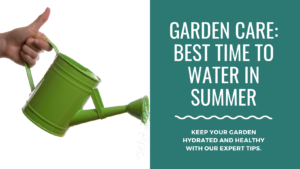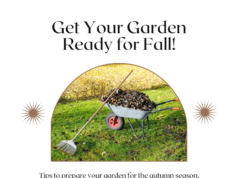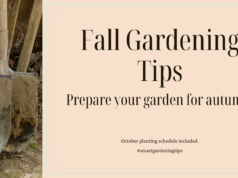
As a gardener, you want your plants to thrive in the summer months, but you may be unsure of how often to water them. Dry and hot weather can be detrimental to your garden, making proper hydration crucial for maintaining healthy and vibrant plants.
In this section, we will discuss the importance of watering your garden during summer and the best practices to keep your plants flourishing in the heat. We will cover factors to consider when watering your garden, analyzing the needs of different plant types, discovering the ideal watering schedule, and understanding the best time of day to water your garden. By the end of this section, you’ll have the knowledge and skills you need to keep your plants healthy and thriving all summer long.
Key Takeaways
- Regular watering is crucial for maintaining healthy plants in the summer months
- Factors to consider when watering include soil type, weather conditions, and plant type
- Understanding the needs of different plant types will help you water them effectively
- A suitable watering schedule ensures that your garden receives the right amount of hydration
- The best time to water your garden is in the morning or evening
Understanding the Importance of Watering Your Garden in Summer
Summer is a critical time for your garden, and proper watering is essential for keeping your plants healthy and thriving. Without adequate hydration, plants can wilt, suffer from heat stress or even die.
The importance of watering your garden in summer cannot be overstated. Water helps plants absorb nutrients and stay cool, preventing wilting and stress. In addition, it promotes healthy root growth and aids in photosynthesis, which is essential for a plant’s energy production and overall health.
Depriving your garden of water during the hot and dry months of summer can have a serious impact on your plants, causing irreversible damage that may be difficult to recover from. Therefore it’s crucial to have a watering routine to keep them hydrated and flourishing.
The Benefits of Watering Your Garden Adequately in Summer
Watering your garden appropriately in summer can have numerous benefits apart from preventing heat stress. It can reduce the likelihood of insect infestations and diseases, increase fruit and vegetable yields, and enhance the beauty of flowers and landscaping.
Furthermore, watering your garden at the right times can save water, cutting down your water bills while keeping your garden healthy. Besides, regularly watering your garden can help build efficient roots that are essential for uptake of nutrients and water retention.
Tip: Adequately water your garden in the late evening, night, or early morning when the sun is down. These times help prevent evaporation of water and save water. Avoid watering in the middle of the day when the sun is highest.
Figuring out the right amount of water to give to your garden plants can seem overwhelming, but understanding the importance of watering them in the summer makes it worth the effort. The next section will cover common mistakes that gardeners make when watering their gardens during the summer season and how to avoid them.
Common Mistakes to Avoid When Watering in Summer
While watering your plants in summer may seem straightforward, many gardeners unknowingly make mistakes that can harm their garden. Here are some common mistakes you should avoid when watering your garden this summer:
| Mistake | Why It’s A Problem | How to Avoid It |
|---|---|---|
| Watering During the Hottest Part of the Day | Water evaporates quickly in high temperatures, resulting in less water reaching the roots of the plant. | Water your plants in the early mornings or late afternoons when temperatures are cooler to reduce evaporation. |
| Overwatering | Overwatering can cause your plants to become waterlogged and suffocate their roots, leading to root rot. | Check the moisture level of the soil before watering and establish a water schedule according to your plants’ specific water requirements. |
| Underwatering | Depriving your plants of sufficient water can cause them to wilt, suffer from stunted growth, and wilt. | Monitor your plants and water them regularly, particularly during the summer months, accounting for plant type, soil type, and weather patterns. |
| Watering the Foliage | Watering the foliage of your plants instead of the soil can cause fungal diseases to develop and ruin your plants. | Direct the water towards the soil around the plant and avoid getting the foliage wet. Water the plant at root level as much as possible. |
By avoiding these common watering mistakes, you will be able to care for your garden efficiently and ensure that your plants thrive throughout the summer.
Factors to Consider When Watering Your Garden in Summer
Summer watering can be tricky, and over or under-watering can harm your plants, causing them to wilt or even die. Before determining how often to water your garden this season, you should consider some essential factors to ensure optimal growth.
- Soil Type: Different types of soil hold water differently, so it’s necessary to examine what type of soil you have. For instance, sandy soil retains less water than clay soil and may require more frequent watering.
- Plant Type: All plants have different water needs, and it’s essential to understand how much water your plants need to thrive. For instance, plants that have shallow roots, such as lettuce, require more frequent watering than those with deep roots.
- Weather Conditions: High temperatures and dry, arid conditions can increase your plants’ water requirements. If you are experiencing an extended heatwave, you may need to water your garden more often than average.
It’s worth noting that while these factors are vital, don’t rely on them entirely to make your watering decisions. Keep a close eye on your garden and the plants’ overall health, and adjust your watering schedule accordingly.
Next, we will move on to analyzing the specific watering needs of different types of plants and determining the ideal watering schedule to keep your garden blooming all summer long.
Analyzing the Needs of Different Plants
When it comes to watering your garden, one size does not fit all. Different plants have varying needs, and it’s essential to understand them to help your garden thrive. Here are some watering suggestions for various types of plants:
Flowers
Most flowering plants require frequent watering, especially during hot, dry weather. However, it’s best to avoid watering flowers using overhead irrigation methods, such as sprinklers. Instead, use a watering can or a soaker hose to deliver water directly to the soil, avoiding wetting the leaves, which can cause fungal diseases such as powdery mildew.
Shrubs
Shrubs can be categorized as either evergreen or deciduous, with evergreens needing more water than deciduous shrubs. For deciduous shrubs, ensure you’re providing adequate water during their active growing season. Mulching can help retain moisture in the soil, so consider adding it to your garden.
Vegetables
Vegetables need consistent watering to produce healthy yields. Water the soil deeply and avoid overhead watering to prevent the spread of fungal diseases. Additionally, aim for irrigation in the early morning hours, so plants have time to dry off before the heat of the day.
| Veggies | Water Requirements (inches per week) |
|---|---|
| Lettuce | 1-1.5 |
| Tomatoes | 2-3 |
| Peppers | 1-2 |
Herbs
Herbs have varying water needs, with some, like mint and chives, requiring more water. Water your herbs frequently, ensuring the soil remains moist but not waterlogged. Herbs in containers need more watering than those planted in the ground, so be mindful of that.
Pro Tip:
Add peat moss or compost to the soil in the vegetable garden to help retain moisture and ensure the soil stays hydrated.
By analyzing the watering needs of your plants, you can tailor your watering schedule to meet their individual requirements. This will help ensure that your garden is becoming more self-sufficient, lessening the chance of water wastage, and providing the right amount of hydration at the right time.
Determining the ideal watering schedule
Creating a suitable watering schedule for your garden is crucial in maintaining its health and vibrancy. Determining the ideal watering schedule requires considering a few factors such as plant type, weather patterns, and soil moisture levels.
Plants have varying water requirements, and understanding the needs of each type is essential for determining an appropriate watering schedule. For example, vegetables usually require more water than flowers, and certain plants like succulents can thrive with less water.
It’s also essential to consider the weather conditions when watering your garden. Watering your plants during cooler hours or on overcast days can help reduce water evaporation and ensure your plants receive the optimal amount of moisture.
Another critical factor to consider is soil moisture levels. Soil that retains water well, such as clay soil, requires less frequent watering compared to sandy soil. You can use a soil moisture meter to determine if the soil is still wet and if watering is necessary.
When determining the ideal watering schedule for your garden, it’s best to start with a basic schedule and adjust it as needed based on your plant’s health and development. Keep in mind that overwatering can be just as harmful as underwatering, so observe your plants carefully to avoid any damage.
With proper understanding and care, you can create an ideal watering schedule that meets the unique needs of your garden, ensuring its health and vibrancy throughout the summer season.
Understanding the best time of day to water your garden
Watering your garden at the appropriate time of day can make all the difference in maintaining a healthy and vibrant garden. The two best times of day to water your garden are in the morning and the evening when temperatures are cooler, and the sun is not as strong.
The morning is especially ideal because the plants have all day to absorb the water they need to withstand the heat. Watering in the evening allows the plants to absorb the moisture overnight, which also prevents evaporation and ensures that the water reaches the roots instead of drying out in the sun.
Watering in the middle of the day when the sun is at its hottest is not recommended as the plants are more likely to transpire and lose moisture, and water droplets can act as a magnifying glass and scorch delicate leaves.
By following proper watering practices and watering your garden at the best time of day, you can ensure the health and vitality of your plants throughout the summer season.
Watering techniques for different types of plants
Watering your plants properly is crucial to their growth and health. Each type of plant has its own unique watering requirements, so it’s essential to learn how to care for each one specifically. In this section, we will provide you with specific watering techniques and tips for various plant groups, including flowers, shrubs, vegetables, and herbs, helping you understand the best ways to water each type effectively.
Flowers
Most flower plants require consistent watering, as they have shallow root systems that can easily dry out. To ensure your flowers stay healthy, water them regularly, especially during hot and dry weather. Water the soil directly around the plants’ base, and avoid getting water on the leaves, as this can cause damage and promote fungal growth. It’s also best to water your flowers in the morning or evening to avoid evaporation during the hottest part of the day.
Shrubs
Shrubs have deep root systems and require a thorough watering less frequently than most flowers. It’s best to water shrubs slowly and deeply, allowing the water to soak into the soil around the root zone. Water shrubs once or twice a week in normal weather conditions, and increase the frequency during hot and dry periods. Avoid overwatering as this can lead to waterlogging and root rot.
Vegetables
Vegetables need consistent watering to produce a bountiful harvest. It’s best to water them at the base of the plant, avoiding the leaves. Water the soil deeply, and make sure that the water reaches the roots. In hot weather, it’s essential to water more frequently, possibly even twice a day. Remember to adjust your watering schedule as the plants grow and the weather changes.
Herbs
Herbs vary in their watering needs depending on their species and location. Generally, herbs enjoy a well-draining soil, thus making it crucial to avoid overwatering. Water the soil around the base of the plants deeply once or twice a week. Avoid watering the leaves, as this can cause disease. It is better to feel the soil periodically to determine when it needs watering.
Summary
Each plant type has its own watering needs that determine how frequently you should water and the amount of water required. Water deeply and consistently, and remember to adjust based on changing weather conditions and growth stages. By following these basic techniques and tips, you can ensure that your plants receive the proper amount of water they need to stay healthy and thrive.
FAQ
Q. How often should I water my garden in summer?
A. The frequency of watering your garden in summer depends on factors like soil type, plant type, and weather conditions. Generally, aim to water deeply and infrequently to encourage healthy root growth and prevent over-watering.
Q. What are some common mistakes to avoid when watering in summer?
A. Some common mistakes to avoid when watering your garden in summer include watering too shallowly, over-watering, and watering during the hottest part of the day. Additionally, make sure to water the base of your plants rather than the foliage to minimize disease risks.
Q. What factors should I consider when watering my garden in summer?
A. When watering your garden in summer, factors such as soil type, plant type, weather conditions, and moisture levels all play a role. Understanding these factors will help you determine the ideal watering schedule and prevent both under and over-watering.
Q. How do I analyze the watering needs of different plants?
A. Different plants have varying watering needs. Analyze the watering needs of your plants by considering their natural habitat, root depth, and foliage characteristics. This will help you understand how much water each plant requires and adjust your watering accordingly.
Q. How can I determine the ideal watering schedule for my garden?
A. To determine the ideal watering schedule for your garden, consider factors such as plant type, weather patterns, and soil moisture. Performing a simple soil moisture test and monitoring the weather forecast will help you establish a consistent and appropriate watering routine.
Q. What is the best time of day to water my garden in summer?
A. The best time of day to water your garden in summer is either early morning or late evening. Watering during these times helps minimize water loss due to evaporation and allows plants to dry before nightfall, reducing the risk of disease.
Q. What are some watering techniques for different types of plants?
A. When watering flowers and shrubs, target the soil around the roots to ensure deep penetration. For vegetables and herbs, water consistently, keeping the soil evenly moist but not waterlogged. Mulching can also help retain moisture for all plant types.
Q. Do you have any additional tips for maintaining a healthy garden in summer?
A. In addition to proper watering techniques, regularly inspect your plants for signs of pests or disease, and take appropriate action. Provide adequate shade or protection for sensitive plants, and consider using efficient watering methods like drip irrigation to conserve water.
Conclusion
Congratulations on learning how to water your garden effectively in the summer! Following the tips provided in this article will help maintain a vibrant and healthy garden throughout the season. Here are some additional tips:
1. Mulch your garden beds to retain moisture and suppress weed growth. This will reduce the need for frequent watering and help your plants thrive.
2. Use a rain gauge to monitor how much rainfall your garden is receiving. This will help you adjust your watering schedule accordingly.
3. Avoid watering your plants during the hottest parts of the day, as this can cause water to evaporate before it can soak into the soil. Instead, water your garden in the early morning or evening to ensure maximum absorption.
4. Consider investing in a drip irrigation system for more efficient watering. This method delivers water directly to the plant’s roots, reducing water waste and minimizing the risk of plant diseases caused by excess moisture.
By implementing these additional tips, you can ensure your garden stays healthy and vibrant all summer long. Happy gardening!
















